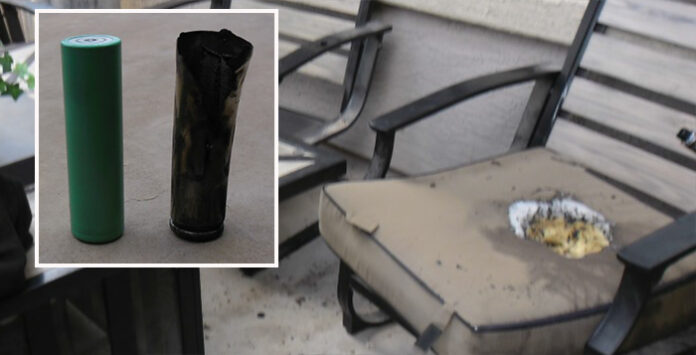For the past week a Maricopa teen has been recovering from injuries after an electronic cigarette exploded in her face on Mother’s Day.
A 17-year-old sustained burns to more than 30 percent of her body when a vaporizer pen, also known as a vape or an e-cigarette, exploded. She was transported to the hospital for treatment.
The incident is not unique. Just five days earlier a 17-year-old boy in New York had an e-cigarette explode in his face and blow a hole in the back of his throat. Another teen in Alabama suffered severe burns to his face when a classmate’s vape exploded next to him.
Last month, a man in California lost an eye from a similar explosion while “vaping” at home.
In all of these cases, faulty lithium-ion batteries or chargers are the prime suspect.
The U.S. Fire Administration issued a report in 2014 studying fires and “explosions” or flashes caused by e-cigarettes. It looked at 25 media reports between 2009-2014. Of those incidents, 80 percent occurred while the e-cigarette battery was being charged. Many caused serious burns and mouth damage, even loss of fingers. Eighty-four percent resulted in a fire.
Other electronic consumer devices use lithium-ion batteries, but the USFA pointed out those batteries “are contained in rigid plastic cases that are generally strong enough to prevent the failing battery from ‘rocketing” away.’ In contrast, e-cigarette batteries are in a cylindrical form. “When the battery seal (at the end of the battery) ruptures, the pressure within the e-cigarette cylinder builds quickly and instantly ruptures, usually at the end. As a result of the battery and container failure, one or the other, or both, can be propelled across the room like a bullet or small rocket.”
There are at least three ongoing lawsuits in California against manufacturers of e-cigs or their components.
Last week, the Food and Drug Administration issued new rules banning the sale of e-cigarettes to minors.




![Elena Trails releases home renderings An image of one of 56 elevation renderings submitted to Maricopa's planning department for the Elena Trails subdivison. The developer plans to construct 14 different floor plans, with four elevation styles per plan. [City of Maricopa]](https://www.inmaricopa.com/wp-content/uploads/2024/04/city-041724-elena-trails-rendering-218x150.jpg)

![Affordable apartments planned near ‘Restaurant Row’ A blue square highlights the area of the proposed affordable housing development and "Restaurant Row" sitting south of city hall and the Maricopa Police Department. Preliminary architectural drawings were not yet available. [City of Maricopa]](https://www.inmaricopa.com/wp-content/uploads/2024/04/041724-affordable-housing-project-restaurant-row-218x150.jpg)










![Elena Trails releases home renderings An image of one of 56 elevation renderings submitted to Maricopa's planning department for the Elena Trails subdivison. The developer plans to construct 14 different floor plans, with four elevation styles per plan. [City of Maricopa]](https://www.inmaricopa.com/wp-content/uploads/2024/04/city-041724-elena-trails-rendering-100x70.jpg)
